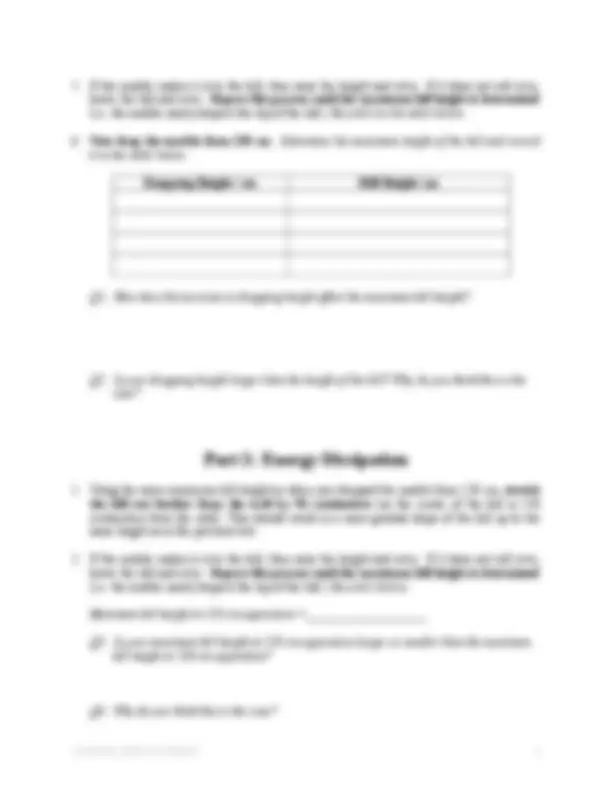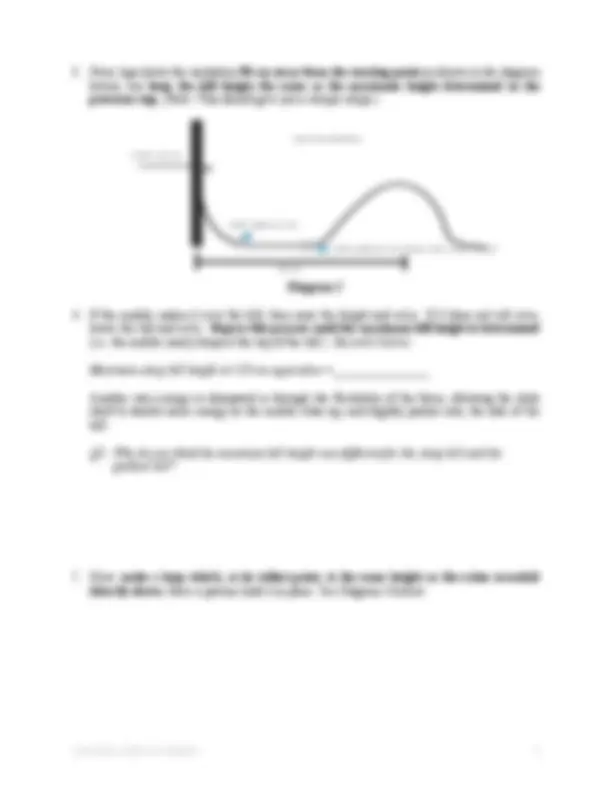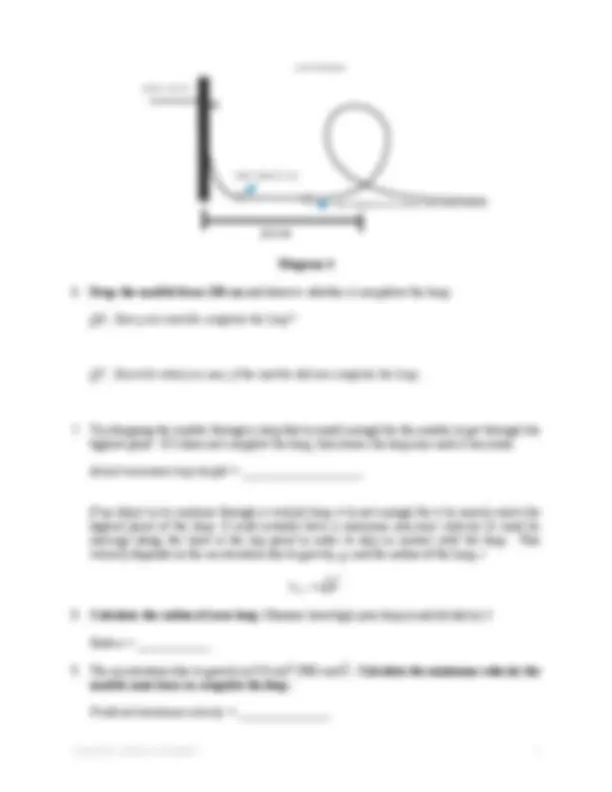





Study with the several resources on Docsity

Earn points by helping other students or get them with a premium plan


Prepare for your exams
Study with the several resources on Docsity

Earn points to download
Earn points by helping other students or get them with a premium plan
Community
Ask the community for help and clear up your study doubts
Discover the best universities in your country according to Docsity users
Free resources
Download our free guides on studying techniques, anxiety management strategies, and thesis advice from Docsity tutors
This document from LABScI at Stanford provides instructions for an experiment investigating the relationship between potential and kinetic energy in roller coasters. Students are asked to determine the maximum hill height for a marble by dropping it from various heights and measuring the resulting hill height. The document also explores energy dissipation through friction and the flexibility of the foam, and calculates the minimum velocity required for a marble to complete a loop. Conceptual questions ask about the location of potential and kinetic energy on a roller coaster and why the first hill is always the highest.
Typology: Exams
1 / 6

This page cannot be seen from the preview
Don't miss anything!




PULL ON IT HERE!
Diagram 4